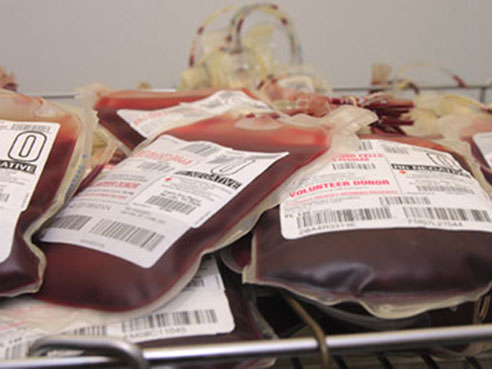 Blood is in big demand at UAB Hospital, once the fourth largest user of blood among U.S. hospitals served by the American Red Cross. And although blood transfusions can be life-saving during cancer care, trauma, surgery, transplants and difficult pregnancies, supply doesn’t always rise to meet demand.
Blood is in big demand at UAB Hospital, once the fourth largest user of blood among U.S. hospitals served by the American Red Cross. And although blood transfusions can be life-saving during cancer care, trauma, surgery, transplants and difficult pregnancies, supply doesn’t always rise to meet demand.
After a 2007 winter storm in the Midwest drove home the vulnerabilities of being dependent on outside sources, hospital officials implemented an aggressive blood-management plan that changed the culture at UAB — leading to less blood use, more blood donations and better outcomes for patients.
In 2006, UAB used nearly 40,000 units of blood from suppliers that often were challenged to meet the need. During that summer, UAB experienced shortages in some blood types 60 percent of the time and rudimentary hospital collection efforts yielded just 168 units. Most of the blood used at UAB was purchased from other states, and hospital officials realized it was time to make changes.
“We began discussions in 2006 to examine how we managed our blood supply,” said Marisa Marques, M.D., professor of pathology and medical director of transfusion services at UAB. “The gap between how much we used and how little was donated locally was dramatic.”
Then in January 2007, a huge winter storm paralyzed Midwestern states, disrupted blood-donation and supply and caused major shortages at UAB and elsewhere in Alabama. The shortage drove UAB officials to action.
Read more on ways UAB Hospital has improved blood management.
